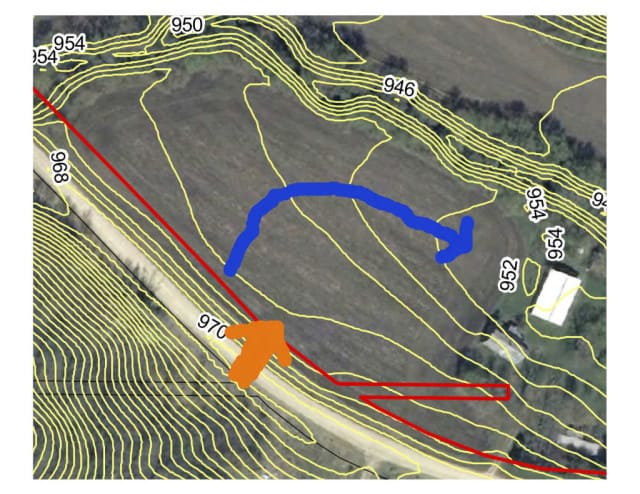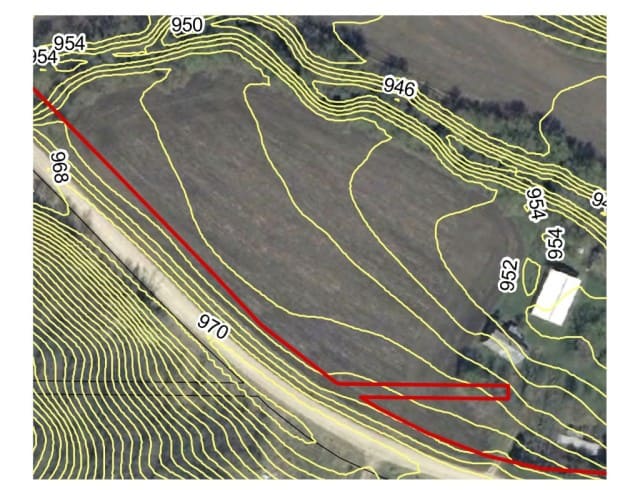A Permaculture Puzzle
Want to help with the farm design? Here’s a challenge for you.
The field immediately west of the farmstead (the one that you see in the header photo) appears flat until you look closely. In fact, it’s a gentle valley channeling water north and then east – straight at the pole shed! That’s why I found four inches of ice in the pole shed last March – and why it filled with topsoil in last summer’s huge rain. As you can see from the contour map, the shape of the land sends water right at the pole shed!
A helpful principle to keep in mind is that water naturally flows at right angles to the contour. The effect of this is to concentrate and channel water along the blue arrow in the second image. In addition, the road acts as a dam collecting water from the hillside to the south. During large rain or runoff events that water is funneled through a culvert indicate with the orange arrow. During ordinary rains and snow melts this culvert doesn’t get any flow, but a serious thunderstorm and – whammo! – big time water rushing onto the field with serious speed and power. (You can see some images from last year’s big rain here.)
So this is the design challenge: what is the best way to construct berms, swales, dams and/or rain gardens to control the water as it moves across this field in order both to minimize topsoil loss and to increase the dwell time, and thus absorption, of the water? At the moment I’m pondering a rain garden at the culvert opening, a swale/berm (to be planted in perennials, but that’s another blog post) somewhere towards the middle of the field and possibly another berm just west of the pole shed to divert any water that does make it that far. But those are general thoughts. If you’d like to have a go at a specific design, please do! I’m open to your ideas. The other factor to keep in mind is that the field will be in alfalfa for the next few years (and may well be used for grazing beyond that time), so access for machinery to cut and bale hay (or for critters in the future) must be included.
Thanks to any budding keyline designers who want to try their hand at this. I hope you enjoy the challenge!


